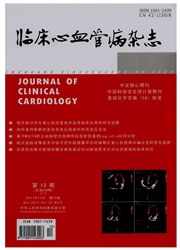

 中文摘要:
中文摘要:
心房颤动(房颤)是全球范围内最常见的持续性心律失常,其发病率随着年龄和其他心血管病危险因素的增多而升高。房颤的发生发展与心房结构重构和电重构有关,但其潜在的机制尚不完全清楚。线粒体是心脏的能量工厂,在肌质网、肌丝和T管周围形成复杂的网络系统,在细胞能量代谢、信号转导、氧化还原状态的控制以及细胞凋亡方面有重要作用。线粒体功能障碍会影响细胞膜离子通道及转运体的能量供应,导致心律失常发生。最近研究表明,线粒体功能障碍与房颤的发生发展有关。本文将探讨线粒体功能障碍与房颤的关系。
 英文摘要:
英文摘要:
Atrial fibrillation(AF)is the most common sustained cardiac arrhythmia worldwide and its incidence increases with ageing and other cardiovascular risk factors.The occurrence and development of AF is associated with atrial structural and electrical remodeling,but the potential mechanisms remain unclear.Mitochondria,energy factory in the heart,form a network surrounding sarcoplasmic reticulum,myofilaments and t-tubules,and play an important role in energy metabolism,signaling transduction,redox state control,cell apoptosis.Mitochondrial dysfunction readily disrupts the cardiac rhythm through depleting energy supply to the ion channels and transporters.Recent researches have evaluated the potential role of the mitochondrial dysfunction in the development of AF.In this review,we tend to summarize the potential relationship between mitochondrial dysfunction and atrial fibrillation.
 同期刊论文项目
同期刊论文项目
 同项目期刊论文
同项目期刊论文
 期刊信息
期刊信息
